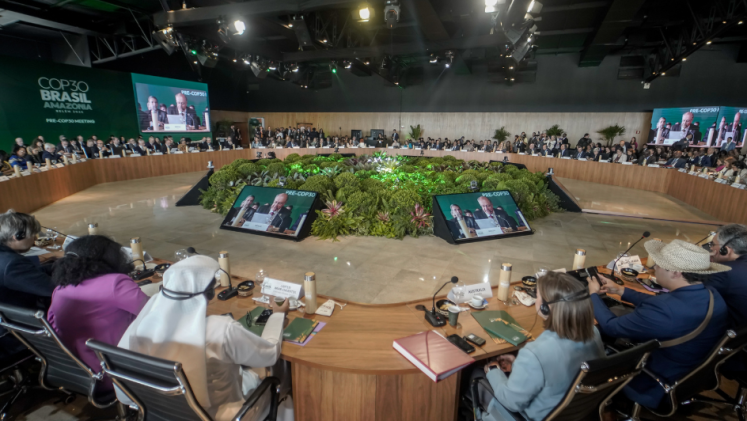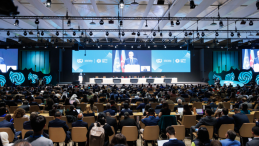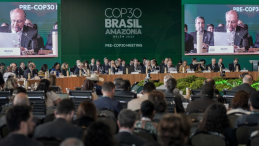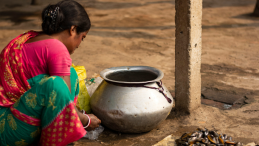From 10 to 21 November 2025, COP 30 will convene in Belém, Brazil, drawing leaders, negotiators, civil society, youth and science communities to a pivotal moment in climate diplomacy. Ten years after the adoption of the Paris Agreement in 2015 the stakes are higher than ever: There is growing emphasis on not only negotiating new commitments and mobilizing collective action but also transforming global climate governance to build capacities for implementation.
Here are five expectations heading into COP 30:
Countries must deliver updated climate plans
The Paris Agreement requires that countries regularly commit to increasingly ambitious climate plans, the so-called ratchet-up mechanism. 2025 is the deadline for a new round of these climate plans, the Nationally Determined Contributions (NDCs). While at the UN Climate Summit in 2020, close to 100 countries – representing about two-thirds of global emissions – pledged to submit more ambitious NDCs ahead of COP 30, more need to follow. COP 30 must serve as the final rallying point to drive comprehensive, economy-wide updates, focusing not just on emissions cuts, but also integrating plans for adaptation, climate finance and loss and damage. Crucially, should the newly submitted NDCs not be ambitious enough to have the intended effect, the summit needs to agree on a collective process post-COP 30 to address remaining global ambition deficits, ensuring the ratchet-up mechanism remains fully functional.
Global adaptation efforts enter the era of implementation
COP 30 will also put a clear spotlight on adaptation. While countries are expected to have National Adaptation Plans (NAPs) in place, implementation is currently limited. Many nations struggle to mobilize the necessary financing to carry out the adaptation priorities outlined in their plans. The meeting in Belém is therefore expected to mark a crucial transition from planning to implementation.
A defining agenda item at COP 30 will be the Global Goal on Adaptation (GGA). As the framework that guides global progress on adaptation, the GGA aims to provide countries with a clearer basis for planning, implementation and accountability, but still needs to become more concrete to help countries implement plans. Parties are working to operationalize the goal by advancing an indicator framework and accompanying guidance to be able to assess adaptive capacity, resilience and vulnerability reduction. The indicator framework can provide countries with a clearer structure for aligning their national adaptation plans, mobilizing finance and strengthening data and capacity-building support for vulnerable communities.
Climate finance must scale and transform
COP 30 will serve as a test of whether global climate finance becomes more equitable and accessible. While COP 29 successfully established the "New Collective Quantified Goal" (NCQG), this ambition must now be included into the implementation and transparency architecture of the Paris Agreement. The current level of financial commitments from developed countries is far below the estimated USD 1.3 trillion needed for climate action in developing countries. Therefore, the current and former COP presidencies are tasked with preparing a roadmap to $1.3 trillion to close this gap. Although this roadmap will not be negotiated, the summit must define clear follow-up actions. Achieving this will require a strong signal of commitment from various initiatives, institutions and investors, including a focus on climate-aligned International Financial Institution (IFI) reform.
The Loss and Damage Fund moves from design to delivery
COP 30 is expected to mark an important step for the Fund for Responding to Loss and Damage (FRLD) as it moves from institutional design toward operational delivery. Now that the fund exists, countries can apply for support to address climate change-related losses. COP 30 will see the formal launch of the Fund’s first call for funding requests, opening access to an initial allocation of USD 250 million for projects supporting communities affected by climate impacts. Additionally, Parties and stakeholders are expected to discuss how the Fund can deliver results and explore how it can complement existing arrangements, including the Warsaw International Mechanism and the Santiago Network. The discussions will likely focus on maintaining coherence across these mechanisms and ensuring resources are deployed effectively, while also effectively assessing respective needs.
Ten years of the Paris Agreement calls for a shift from pledges to practical implementation
Marking the Paris Agreement's ten-year anniversary, COP 30 must celebrate progress while acknowledging persistent gaps in ambition and implementation across all pillars (mitigation, adaptation and finance). It is crucial for the conference to safeguard the mechanics of the Paris Agreement and multilateral climate action. The conference also needs to initiate a policy shift, moving from legal norm-setting to practical implementation. This requires two key actions: capacity-building at all levels and within all tiers of society, and empowering local voices and institutions through the global climate summit. Systematically integrating the Action Agenda with the COP, and focusing on credible follow-up, can scale implementation beyond just rhetoric.





